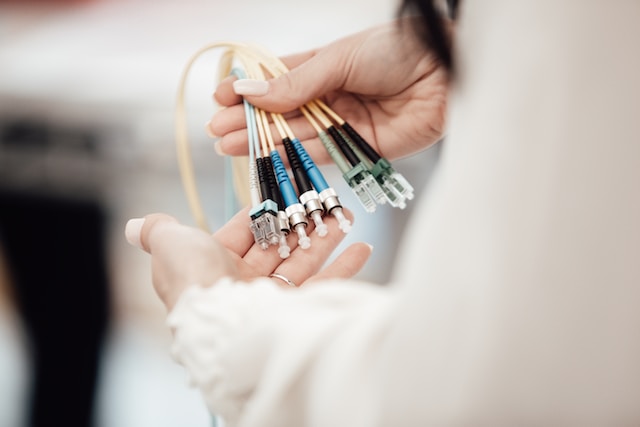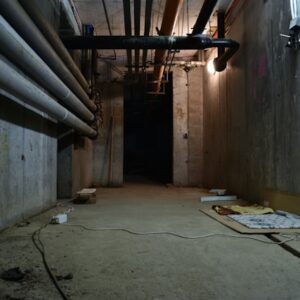A well-structured cabling network is vital to a smooth-functioning workplace. However, poor installation or maintenance practices can lead to many problems that could compromise your network’s security.
When phone signals became digital and LANs proliferated, new cables, cabling standards, and equipment were required. The work area cabling connects hardware/equipment in the workspace to the telecommunications information outlet, horizontal cross-connect, or terminal equipment room (TE). The backbone cabling offers interconnection between telecommunication rooms and entrance facilities.
Investing in professional cabling services Tennessee ensures a reliable and high-performance network and provides a foundation for integrating emerging technologies. Whether optimizing an office for productivity or creating a smart home environment, professional cabling services are the linchpin for seamless connectivity in today’s interconnected world.
Poorly Installed Cables Can Impact Network Performance
Telecommunication cables enable two-way communication over long distances by transferring information from one place to another. This can include voice, video, and data.
Telecommunication cabling can become a significant source of network problems without proper installation and maintenance. This can impact a telecommunications network’s speed, efficiency, and reliability.
Poorly installed telecommunication cabling can also lead to data corruption and security risks. It is important to follow industry standards and best practices when installing cabling.
Structured cabling minimizes the number of wires that run throughout a building, creating a cleaner and less cluttered look. Additionally, it allows for future upgrades and expansion, saving businesses time and money.
A key aspect of structured cabling is cable termination, which involves connecting a wire to a connector. There are specific guidelines for terminating different types of cables to ensure they operate correctly. Following these standards can help reduce network performance problems and improve overall system efficiency. Maintaining a record of cabling types, lengths, and installation dates is also essential.
Poorly Installed Cables Can Lead to Signal Reflections or Crosstalk
When it comes to data transmission, quality cabling is critical. Your business will need a proper cabling infrastructure to improve its network speeds and stable connections. This can lead to frustration when streaming media or locating essential files.
Following each cable’s recommended bend radius guidelines is essential to reduce interference and improve signal quality. Excessive bending can cause changes in impedance, leading to signal reflections and crosstalk.
Furthermore, it’s critical to comprehend the reasons behind crosstalk and strategies for reducing it. Crosstalk can occur due to electromagnetic coupling between adjacent wires nearby or from induced transients in other cables or connectors. It can also be caused by external sources such as alien crosstalk. Understanding these factors will help ensure your cabling is well-installed and free from crosstalk. This will improve your data transmission rates, allowing you to upload and download files quickly.
Poorly Installed Cables Can Lead to Data Corruption or Data Breaches
Telecommunication cables enable two-way communication by transferring information between locations. These wires are a vital component of networks because they allow businesses to communicate via telephone, videoconferencing, and computer data. Understanding the different types of telecommunication cables and their uses is essential before designing a cabling system.
A well-designed cabling network is one of the most critical parts of any business. It can help reduce downtime and increase productivity by ensuring reliable connections and speedy file searches. There’s nothing worse than being in a virtual meeting and experiencing latency issues or having to wait an extended amount of time to locate a file stored on your network.
Structured cabling includes backbone, work area cable and cable components, telecommunication closets, and access provider spaces. It offers connectivity between a building or campus’s telecommunication rooms, equipment rooms, and entrance facilities. Typically, copper wires are used for backbone cabling, and the distance between the cables can be up to 90 meters.
Poorly Installed Cables Can Lead to Unauthorized Access
You may give it little thought, but the telecommunications network that keeps your business connected and productive is a complex web of wiring and cabling. The scalability, redundancy, and reliability provided by structured cabling mean that VoIP phone calls have minimal latency, video conferencing connections stay clear and have consistently high throughput, and network applications run smoothly with no lag or pixelation.
If you have an unorganized cable system, it can be challenging to pinpoint a problem when it arises, resulting in more extended downtime for your systems. At the same time, technicians work to address the issue. Structured cabling is designed to provide technicians with consistent access to all components needed for repairs and upgrades, reducing the time it takes to diagnose and fix problems.
With new technologies like 5G networks, intelligent systems, and sustainable solutions reshaping our world of communications, you need an organized network to keep your business competitive.




